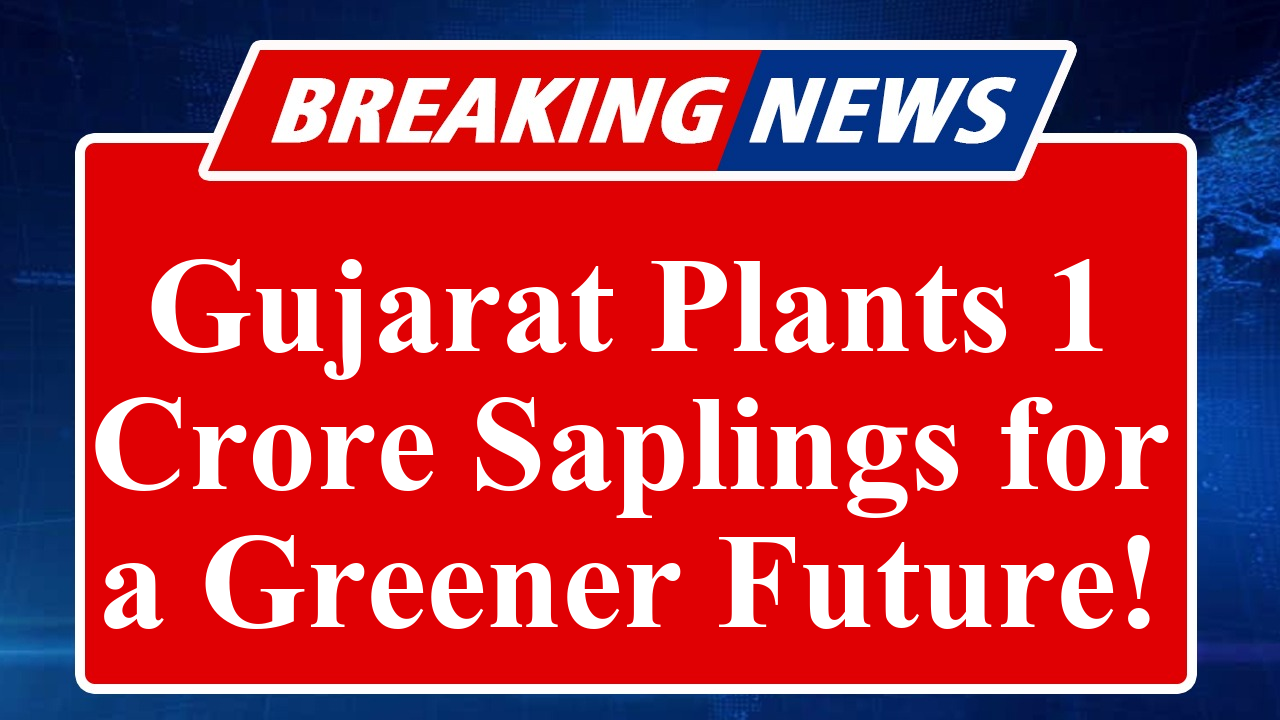Gujarat launches an ambitious tree plantation drive aiming to plant 1 crore saplings in June 2025, under the Green Gujarat initiative. The campaign, led by the state government, focuses on increasing forest cover, combating climate change, and promoting agroforestry. Engaging communities, NGOs, and corporations, it emphasizes native species and post-plantation care to ensure sustainability.
Gujarat Embarks on Massive Tree Plantation Drive for a Greener Tomorrow
In a bold step towards environmental sustainability, the Gujarat government has unveiled an ambitious plan to plant 1 crore saplings across the state in June 2025, as part of its ongoing Green Gujarat initiative. This large-scale campaign, launched in alignment with Van Mahotsav 2025, aims to bolster the state’s forest cover, mitigate the impacts of climate change, and foster community-driven environmental conservation.
The initiative, spearheaded by the Gujarat Forest Department, targets a variety of locations, including rural farmlands, urban areas, riverbanks, and community lands. The monsoon season, with its optimal rainfall from June to September, provides ideal conditions for sapling growth, ensuring higher survival rates. The government has prioritized native species such as neem, khejeri, babool, and fruit-bearing trees like mango and guava, which are well-suited to Gujarat’s arid climate and soil conditions. These species not only thrive in challenging environments but also provide economic benefits to farmers through agroforestry, enhancing their livelihoods.
To ensure the success of the plantation drive, the state has implemented a robust strategy that includes community participation, corporate partnerships, and advanced monitoring mechanisms. Local communities, NGOs, and youth groups are being mobilized to participate in planting and maintenance activities. The campaign also encourages corporate social responsibility (CSR) initiatives, with companies sponsoring saplings and organizing plantation events in collaboration with local organizations. For instance, the Gujarat Rajya Gram Vikas Samiti, a key NGO partner, is promoting the creation of Miyawaki forests and agroforestry systems to maximize ecological benefits.
A significant focus of the campaign is post-plantation care, addressing challenges such as water scarcity, poor soil quality, and lack of awareness. The Forest Department has introduced geo-tagging for each sapling, enabling real-time monitoring through a third-party agency to track survival rates. Regular watering, mulching, and protection from grazing animals are being emphasized to ensure the saplings mature into healthy trees. Additionally, awareness campaigns are being conducted to educate communities about the long-term benefits of tree plantation, including carbon sequestration, soil conservation, and biodiversity preservation.
The Green Gujarat initiative builds on the state’s history of successful plantation drives. In 2018, the government launched a campaign to plant 10 crore trees, focusing on riverbanks and reservoirs, which significantly enhanced the state’s green cover. More recently, environmentalist Viral Desai, known as the “Greenman,” led a drive to plant 1,000 trees in Surat and Navsari during World Environment Day 2025, inspired by Sardar Vallabhbhai Patel’s vision of unity and environmental harmony. These efforts reflect Gujarat’s commitment to combating climate change, especially in a state with only 7.6% forest cover, one of the lowest in India.
The campaign also aligns with national efforts like the “Ek Ped Maa Ke Naam” initiative, which achieved a target of planting 80 crore saplings nationwide by September 2024. Gujarat’s contribution to such programs underscores its role in India’s broader environmental goals, including carbon neutrality and ecological restoration. By involving diverse stakeholders, from farmers to urban residents, the state aims to create a sustainable model for environmental conservation.
Challenges remain, including ensuring adequate water supply in Gujarat’s arid regions and preventing encroachments on plantation sites. To address these, the government is collaborating with local panchayats and providing technical assistance to farmers. The use of drought-resistant species and innovative techniques like the Miyawaki method, which involves dense planting of native species, is expected to enhance the campaign’s impact.
The Gujarat Forest Department has also introduced incentives for participants, such as supplying high-quality seedlings at nominal rates through nurseries across the state. Over 90 million seedlings were distributed annually under previous Van Mahotsav programs, and similar efforts are underway for 2025. The campaign’s success will be evaluated through joint inspections by forest officials, village heads, and revenue department representatives to ensure transparency and accountability.
As Gujarat embarks on this transformative journey, the plantation drive is not just about increasing green cover but also about fostering a collective sense of responsibility towards the environment. By planting 1 crore saplings, the state aims to leave a lasting legacy of sustainability, resilience, and hope for future generations.
Disclaimer: This article is based on information from government announcements, environmental reports, and initiatives like Green Gujarat and Van Mahotsav, as well as contributions from NGOs and environmentalists. Data is sourced from official websites, news reports, and public statements. For the latest updates, refer to Gujarat Forest Department’s official communications.

